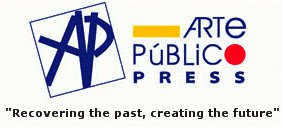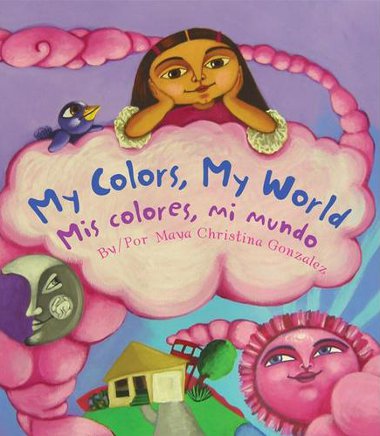Arte Publico’s Commitment to Accessibility
From donating health education books to underserved youth, to adding Hispanic history to cyberspace for all to enjoy, Arte Público Press is doing what it can to give back to its communities.
¡Salud, familia!
Arte Público Press’s ¡Salud, familia!program distributes health-related bilingual children’s books to low-income Hispanic families. The books focus on exercise and nutrition, and include such titles as I Kick the Ball/Pateo el balón and Adelita and the Veggie Cousins/Adelita y las verduritas primas.
In addition to free book distribution, ¡Salud, familia! makes an abundance of health information readily available to the public through the web portal Latinoteca.com.
One of the program’s most interactive projects is its A Day Without Sugar initiative which encourages children to not only go without sweets, but also to steer clear of added sugar in many “non-sweet” foods. ¡Salud, familia! hosts downloads of free coloring books, recipes, and health facts for kids as they go A Day Without Sugar.
Recovering the U.S. Hispanic Literary Heritage
Accessibility is at the core of Arte Público Press’s Recovering the U.S. Hispanic Literary Heritage project. Not only does the project locate and preserve Hispanic written culture, it then disseminates its findings; many times, free of charge on Latinoteca.com. Be sure to check out the collections of Rare Digitized Books, Famous Hispanic Photos, and Bibliographies & Microfilm Collections.
Feature
Publishing Profiles: Dr. Nicolas Kanellos of Arte Publico Press
Creating a Thriving Latino Literary Community From the Ground Up
In 1973, at a time when there was very little Latino literature available in the U.S., Dr. Nicolas Kanellos launched the Latino literary magazine, Revista Chicano-Riqueña. The magazine’s success grew, thanks to hand marketing at community festivals, civil rights actions and marches, and Latino theater performances.
Revista’s grassroots marketing drummed up excitement for Latino literature, and in November of 1979, at the urging of two Nuyorican writers, Dr. Kanellos and his team published their first book, La Carreta Made a U-Turn by Tato Laviera, under the name Arte Público Press. The book was an immediate hit in academia, and Arte Público Press soon followed with award-winning Chicano author Rolando Hiojosa’s Dear Rafe, and Sandra Cisneros’ widely acclaimed The House on Mango Street. From that moment on, Arte Público Press was here to stay.
Not only has Arte Público Press continued in the publishing world since 1979, it has grown to include Piñata Books, its imprint for children and young adults, and Recovering the U.S. Hispanic Literary Heritage, a program that preserves Hispanic written culture. Arte Público Press and its imprints are affiliated with the University of Houston and are now, according to their website, “the nation’s largest and most established publisher of contemporary and recovery literature by U.S. Hispanic authors.”
 Arte Público Press’s current success has everything to do with Dr. Kanellos’ grassroots marketing in the press’s beginning. “In those early days,” Dr. Kanellos told me, “I sought to emulate what Langston Hughes had done in creating a market for African American literature and selling his works by touring the small town of the South and selling his books out of his car trunk. So at the same time as we were promoting the works as texts for college classes by taking authors to conferences of educators, such as the National Association of Chicano Studies, I applied for small grants to tour writers to small towns in Texas on the way to readings at community centers and libraries in Houston, Austin, and San Antonio.”
Arte Público Press’s current success has everything to do with Dr. Kanellos’ grassroots marketing in the press’s beginning. “In those early days,” Dr. Kanellos told me, “I sought to emulate what Langston Hughes had done in creating a market for African American literature and selling his works by touring the small town of the South and selling his books out of his car trunk. So at the same time as we were promoting the works as texts for college classes by taking authors to conferences of educators, such as the National Association of Chicano Studies, I applied for small grants to tour writers to small towns in Texas on the way to readings at community centers and libraries in Houston, Austin, and San Antonio.”
Dr. Kanellos and his team knew how to market to their target audience, and their success took Arte Público Press from its humble start (they had a $50,000 budget and no paid staff) to a well-established publishing house releasing about 25 titles every year.
Ten more titles are published annually under the company’s children and young adult imprint, Piñata Books. Launched in 1994 in response to parents, teachers, and librarians wanting to see a more accurate portrayal of U.S. Hispanic culture in young adult literature, Piñata Books publishes bilingual children’s picture books, and novels and short stories for young adults (available online here).
Speaking to the reasons behind the launch of Piñata Books, Dr. Kanellos told me, “We decided we needed to grow our audience, in addition to advancing literacy in both languages and cultural preservation among the young, that particularly bilingual education programs needed a source for authentic representations of Latino life, language and culture, that kids needed to see themselves reflected in books--something that was missing then and to a great extent are still missing in most textbooks and books for children and young adults.”
Thanks to the Mellon Foundation, which aims to build programs at their core capacity, and the Lila Wallace/Reader’s Digest Fund, which aims to better the lives of disadvantaged children, Piñata Books became a reality. Since its inception, thousands of children have finally been able to read books that resonate with their lives.
 In addition to the contemporary Latino literature published by Arte Público Press and Piñata Books, Arte Público’s Recovering the U.S. Hispanic Literary Heritage program (supported for more than 10 years by the Rockefeller Foundation) preserves and makes accessible all forms of Hispanic written culture. The program publishes it all: letters, memoirs, cookbooks, sermons, non-fiction, and creative literature. “We have found, preserved, and are making accessible in digitized editions through EBSCO Inc. hundreds of thousands of Hispanic texts, including entire runs of newspapers,” Dr. Kanellos told me.
In addition to the contemporary Latino literature published by Arte Público Press and Piñata Books, Arte Público’s Recovering the U.S. Hispanic Literary Heritage program (supported for more than 10 years by the Rockefeller Foundation) preserves and makes accessible all forms of Hispanic written culture. The program publishes it all: letters, memoirs, cookbooks, sermons, non-fiction, and creative literature. “We have found, preserved, and are making accessible in digitized editions through EBSCO Inc. hundreds of thousands of Hispanic texts, including entire runs of newspapers,” Dr. Kanellos told me.
As founder of Arte Público’s Recovery project, Dr. Kanellos knows there is an extensive trove of Latino literature in the United States. Also being involved in contemporary publishing, Dr. Kanellos knows the barriers today’s Latino writers face when attempting to add to that rich history.
“Today, as opposed to 1973 or 1979,” Dr. Kanellos noted, “there is an awareness of Latino or Hispanic literature, even while there is insufficient opportunity for authors to publish their works.” Dr. Kanellos added that while language arts and history textbooks are increasing Hispanic content (15 percent of Arte Público’s income comes from licensing their author’s work to textbook and commercial publishing industries), the Latino divisions of many major publishers have shut down. However, Dr. Kanellos did offer good news for Latino authors: there are an increasing number of new opportunities to publish with non-Latino independent and small presses.
Dr. Kanellos hasn’t let the challenges of publishing Latino literature keep him from remembering why he does this work. “I am still captivated by well written work of literary art,” he told me, “and feel responsible for furthering our culture not only as a minority or ethnicity but as American.”
* * * * *
Katharine Zurek graduated from the University of Michigan with a degree in English and Women's Studies. She currently works in the social service field. Please email krzurek@gmail.com with comments or questions.

